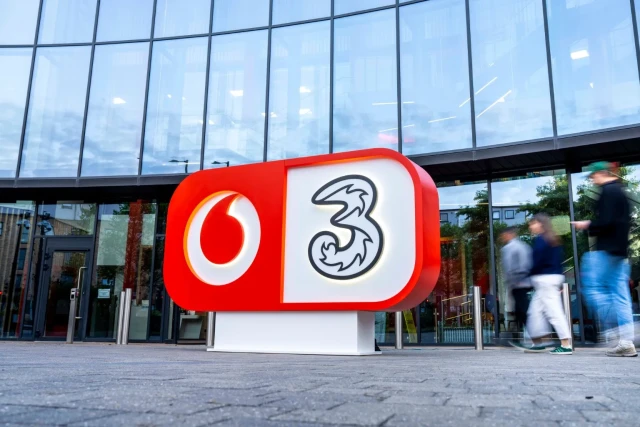The Vodafone-Three merger and the potential implications for Policing

It was announced in June 2023 that Vodafone and Three intended to combine their UK operations. This merger received regulatory approval in December 2024.
More detail on how this will work operationally has now been released. They will use the Multi Operator Core Network (MOCN) approach, which allows each network to share the other’s base stations and Radio Access Networks, but each retaining its own separate core network.
What is MOCN?
MOCN is one way of allowing users of different networks to share each other’s resources. MOCN stands for Multi‑Operator Core Network. It's a form of RAN (Radio Access Network) sharing that enables multiple mobile network operators to use the same radio infrastructure (like antennas and towers) while keeping their core networks fully separate. It’s how Vodafone and O2 shared 4G resources when they first rolled out services in the 2010s. In a MOCN deployment, the cells are also shared by the collaborating networks and this is where there may be an implication for cell site analysis and RF surveying.
MOCN arrangements only affect 4G and 5G NSA (Non-Standalone) services. Vodafone’s legacy 2G and new 5G SA (Standalone) – or 5G Ultra - services aren’t affected.
Three never had a 2G network and hasn’t deployed 5G SA, so the MOCN scheme doesn’t appear to affect connections made on either of those technologies. Vodafone phones will continue to connect to those services as usual.
Key Implications for RF Surveying and Cell Site Analysis
Cell Renumbering
When MOCN is deployed, each shared cell broadcasts multiple PLMN IDs (Public Land Mobile Network identifiers) over the same EUTRAN Cell ID (ECI). For example, a Vodafone cell identified as 234-15-123456789 may now also broadcast as 234-20-123456789 to serve Three users.However, if the Three identifier 234-20-123456789 already exists elsewhere in the legacy Three network, either the VF cell or the legacy H3 cell would need to be renumbered to allow 234-20-123456789 to be used for the shared cell.
Proliferation of ‘New’ Cells
As MOCN is rolled out, investigators and RF survey teams will likely observe a sudden increase in detected cells, as each existing Vodafone site could now also broadcast Three identifiers, and vice versa. These "new" cells aren’t physical additions but rather logical duplicates under the other operator's PLMN ID.
Similarity to Existing Shared-Site Configurations
RF survey data in MOCN-enabled areas may closely resemble patterns seen at existing shared Vodafone/O2 (known as Cornerstone/Beacon) sites, where the same ECI (cell ID) is detected under multiple PLMN IDs. This can make it appear as though there are two distinct cells when in fact it's a single physical cell broadcasting for both networks. Investigators and analysts will need to interpret these correctly to avoid confusion during cell site mapping or RF profiling.
For policing and investigative work, the Vodafone–Three MOCN rollout introduces changes that require careful interpretation but does not fundamentally disrupt current practices. Crucially, each operator will continue to generate its own CDRs via its own core network, preserving clarity in call attribution and billing data.
However, cell site analysis and RF surveys may become more complex due to shared cells broadcasting under multiple PLMN IDs. Investigators may see an apparent increase in cell numbers or duplicated ECIs, similar to patterns observed at existing shared sites like Cornerstone (Vodafone/O2).
The main investigative risk associated with these changes is the possibility that some existing cells will disappear, due to cell renumbering. If this happens, those cells will no longer be available to be surveyed, meaning that it’s important for users of communications data to consider whether they should commission ‘proactive’ RF surveys to capture details of the current coverage of VF and H3 cells before any network reconfigurations take place.
Joe Hoy’s paper dives deeper into the potential implications of this merger, and can be viewed by our customers here in the Customer Portal.